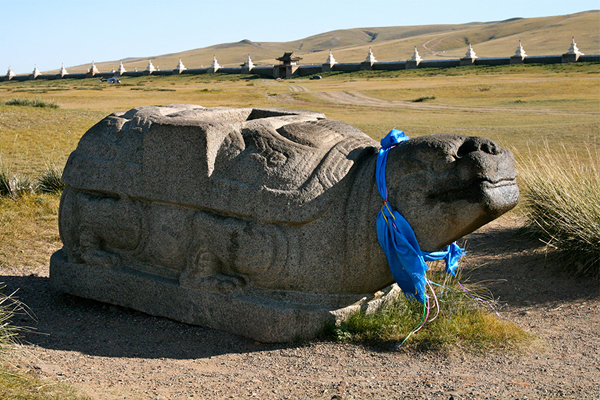

Karakorum, ancient capital of Mongol empire, was established by Chinggis Khan in 1220 in the Orkhon valley at the crossroads of the Silk Road. Karakorum was a busy spindled city with high civilization built by the best artists and masters of antiquity.The ancient capital served as the political, cultural and economic capital of the Mongols for 40 years until Khublai Khan moved it to Khanbalik, in what is now Beijing. Following the move to Beijing, Karakorum was abandoned and then destroyed by the soldiers from Ming Dynasty in 1388. The remains of the capital that stood at the crossroads of the Silk Road are extensive underground archaeological assets and two granite turtles that once stood at the main gate to the city. Four of these turtle sculptures used to mark the boundaries of ancient Karakorum, acting as protectors of the city (turtles are considered as symbols of eternity). Later in 1586, Erdene Zuu, the first Buddhist monastery in Mongolia, was built on the ruins of the 13th century capital city. Nowadays there is small town called Kharkhorin, which is 360 km from Ulaanbaatar city. Kharkhorin is located at the lower end of the upper valley of the Orkhon River, which is part if the World Heritage Site Orkhon Valley Cultural Landscape.
Recommended


Mongolian winter is the most incredible winter that one might experience and there is plenty to see and enjoy during a winter travel. Glittering white snow, clear fresh air, sun, and little chills are the image of Mongolian winter. Taking this fan...
Duration: 3 Days / 2 Nights
Destination: Gobi - Central


All of Mongolians celebrate the Lunar New Year, which is called in Mongolia “Tsagaan Sar” or the “White Moon”. It is widely celebrated throughout the country around January or February according to the combination of Solar-...





